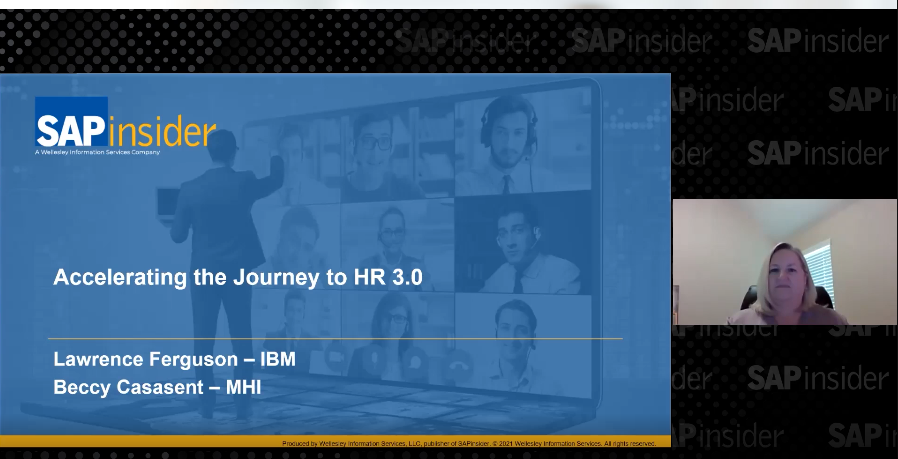You can carry out an available-to-promise check for a sales order when the items in the sales order have a bill of material structure by using the correlation functionality in R/3 and Advanced Planning and Optimization (APO).
Key Concept
Sometimes products have to be delivered together as part of a package. However, these packages are not necessarily stocked. When different components of a package have to be delivered together, the available-to-promise check should enable the process by confirming them at the same time. The correlation profile in Advanced Planning and Optimization helps to correlate the line items of these packages. Without the correlation profile, the line items might confirm separately on different dates and with different quantities, making the process disjointed.
A television set package is comprised of a television and a television stand. Although these components are not
assembled together, a customer placing an order would expect the television and the stand to arrive together. The
television and the stand are stocked separately in the warehouse. When a customer places an order for 10 television
packages, the sales order would recognize that the order is really for 10 television sets and 10 stands. When the
available-to-promise (ATP) check happens on the sales order, it should make sure that 10 of each are available. If only
six televisions and seven television stands are available, then it should recognize the relationship and confirm only six
of each in the sales order.
I’ll explain the necessary configuration settings in R/3 and APO 4.0 and the required master data setup to
make this work. I’ll provide a product allocations scenario as an example, and then show how to use the
functionality when you run backorder processing.
An Example Scenario
Consider a package consisting of one of component A and five of component B. When a sales order is created for two
units of the package, it should explode into two units of component A and 10 units of component B. When a sales order is
placed for the package, it should explode into the different components in the bill of materials (BOM) defined for the
package. Further, the system should invoke the correlation functionality when the ATP check is done for the sales order.
Configuration Settings in R/3
To prepare R/3 for use of the correlation profile, take these three steps:
Step 1. Define the item category.
Step 2. Assign the item category group for the package.
Step 3. Assign the item category group for the components.
Step 1. Define the item category. Configure the item category derived for the material package in
the sales order to allow the delivery group correlation of the components of the BOM and the BOM explosion. Use
transaction SPRO and follow menu path SAP Reference IMG>Sales and
Distribution>Sales>Sales Documents> Sales Document Item>Define Item Categories. This brings up a
screen entitled Maintain Item categories overview. On this screen highlight the item category — I
have defined and configured ZPHD for my example. Click on the lens icon to bring up the details of
this item category. This takes you to the screen in Figure 1. I’m focusing only on the section
(circled) that is relevant to this article, Bill of Material/Configuration.

Figure 1
Define the item category
The Structure scope defines how the system processes the BOM in a sales order involving this item
category. It defines whether you can configure the material. For non-configurable materials, it defines whether and to
what level you explode the BOM. I chose the value A, which means explode the single-level BOM.
Figure 2 displays the other possible values.

Figure 2
Values for the Structure scope
I specified the Application as SD01, corresponding to Sales and
Distribution (SD). This enables automatic determination of the correct BOM alternative for different organizational areas,
in this case for SD.
I chose the value A for Create Delivery Group. A
stands for creating a delivery group with correlated schedule lines. The other possible values are blank, which means no
delivery group, or X, which means that only a delivery date is created for the delivery group. The
Manual Alternative option means that if you have multiple BOMs for the material, you can select an
alternative manually.
Next I’ll explain how to ensure that the system automatically picks up item category ZPHD
in the sales order for the package material.
Step 2. Assign the item category group for the package. Do this by ensuring that the
item category group that is assigned to the package material in the material master has the default item category
ZPHD for the document type that the system uses for creating the sales order. Figure 3 shows that
the Item category group ZCPK is assigned to the material package in the Sales: sales org.
2 view of the material master.

Figure 3
Assign the item category in the material master
Therefore, for Item category group ZCPK and for the document type used to create a sales
order, the system should pick up item category ZPHD automatically in the sales order. Set this up via transaction
SPRO and follow menu path SAP Reference IMG>Sales and Distribution>Sales>Sales Documents>Sales
Document Item>Assign Item Categories. Figure 4 shows that for the document type
ZOR (SaTy) and item category ZCPK (ItCGr), item
category usage is blank. The system then chooses the default item category (DfltC), which is
ZPHD.

Figure 4
Assign the item category to the item category group
Step 3. Assign the item category group for the components. The item category assignment
also should ensure that the system picks up the correct item category for the components. Do this by linking the higher
level category (ZPHD) to the default item category (ZPCM) for the components, as shown in
Figure 5, again through the same transaction as in step 2. Note that the item category group for the
component is NORM (Figure 6). Follow step 2 in the material master to accomplish this.

Figure 5
Link ZPHD with the default item category for the components, ZPCM

Figure 6
Assign the item category group for the components
The package itself is a “logical” entity; in reality, it just corresponds to one of component
1 and five of component 2. Therefore, it is not stocked in the warehouse as a physical entity. You should specify the
header schedule line category as not relevant for delivery because only the components are delivered.
Do this via transaction SPRO and follow menu path SAP Reference IMG>Sales and
Distribution>Sales>Sales Documents>Schedule Lines>Define Schedule Line categories. This brings up the
Maintain Schedule Line Categories overview screen. Highlight the schedule line category
ZT (configured for my example) and double-click to bring up the screen in Figure 7. As
you can see, the relevant check box for delivery indicator (Item rel.f.dlv.) highlighted is not selected
because you do not stock and deliver the package.

Figure 7
Maintain the schedule line categories for the header
The schedule line category that the system automatically proposes for the package header is
ZT, as shown in Figure 8. Set this up via transaction SPRO and follow menu path
SAP Reference IMG>Sales and Distribution>Sales>Sales Documents>Schedule Lines>Assign Schedule Line
categories.

Figure 8
Assign the schedule line category for the package header
Master Data Setup in R/3
Now that I have reviewed the important configuration settings in R/3, I’ll go on to the required
master data setup in R/3 to make the functionality work.
The BOM is defined for the product package as one of COMPONENT1 and five of
COMPONENT2 (Figure 9).

Figure 9
Material BOM for the package
While I will not go into great detail about how to define the BOM, you do need to make some relevant
settings. Make COMPONENT1 and COMPONENT2 relevant for sales so that the components are
picked up when the BOM explosion occurs after a sales order is created for the package. Figure 10 shows
the highlighted field Relevant to Sales with the value of X.

Figure 10
Make the component relevant for sales
Other Data Setup
Note that in addition to the settings in R/3, you should activate the integration models for the sales
order and ATP check so that APO performs the ATP check. That process is beyond the scope of this article.
Configuration Settings in APO
Now let’s look at the configuration settings for the correlation profile in APO that determine how
the availability check is performed. Access the settings via transaction SPRO and follow menu path SAP
Reference IMG>Advanced Planning and Optimization>Global Available to Promise (Global ATP)>General
Settings>Maintain correlation Profile. It brings up the screen in Figure 11. SAP defines two
standard correlation profiles, called BOM and STD.

Figure 11
Correlation Profile in APO
The system automatically uses the Profile (shortened for Correlation Profile) called
BOM when the BOM is used in the sales document and when the delivery group correlation is defined for the
item category used for the material corresponding to the package. The system uses the STD correlation
when the different line items in the sales order are linked by using the same delivery group.
The CorrTy (shortened for Correlation Type) defines whether the confirmations for the
different line items in the sales order are linked only by the dates or whether they are also linked by the quantity of
the different line items in the sales order. Notice that the CorrTy values are different between
BOM and STD, the former using both quantity and date correlation, the latter using just
the date correlation.
The next field, Corr: Confirm. Mode (shortened for Correlation: Confirmation Mode),
defines how the system handles partial confirmation for the different line items. The standard setting is
D for BOM, which means that if there are partial confirmations for the different line
items, the system reduces to the minimum of the confirmations possible for the different line items. However, if one line
item has a zero confirmation, then the system ignores the quantity correlation and carries out the correlation based on
dates.
Another option that can be pertinent to my example is E, which means if the
confirmation on one component turns out to be zero, then the system correlates this zero confirmation and reduces the
confirmations for all line items in the sales order to zero. Notice that the standard setting for STD is
to keep the confirmed quantities of the different line items. The basic idea is not to link between the confirmed
quantities as in a BOM but to ship the different line items on the same date.
The third field, AdjMod, stands for the Adjustment Mode for Dependent
Requirements. This is used in the context of a multilevel ATP check and is not within the scope of this article.
Order Entry and Correlation Profile
Here is a look at the sales order created for five units of the package (Figure 12). The
two components are not entered manually, but are automatically created in the sales order. COMPONENT1 and
COMPONENT2 are also on the product allocation and the ATP check is performed using a combination of
product availability and allocation check. The sales order respects the quantities as defined in the BOM. When an order is
created for five of the package, the sales order automatically creates five of COMPONENT1 and 25 of
COMPONENT2 by exploding the BOM of the package. Note also that the two components are linked to the
higher level item package by the field HgLvlt. It displays the value of 10, which
corresponds to the sales order line item of 10 that has the material package.

Figure 12
Order entry and invoking correlation
The icon highlighted in a circle with the arrow corresponds to the APO delivery group correlation. The
requested date on the line items is 06/13/2006.
When you click on the highlighted APO delivery group correlation icon, the system brings up the
APO Availability Check – Result Overview screen (Figure 13). It shows the
confirmation situation based on the availability check. The system shows a confirmation quantity of 1 for
COMPONENT1 and 5 for COMPONENT2.

Figure 13
APO availability check
Since the two components are allocated, the confirmations are limited to their allocation as well as the
product availability check. Figure 14 shows a view of the allocation situation. The allocation for
COMPONENT1 and COMPONENT2 is 10 and 6, respectively.

Figure 14
Display of the allocation plan for components
Figure 15 is a view of the product availability overview for
COMPONENT1. It shows a quantity of 4 available. For the second component, Figure
16 shows an availability of 6.

Figure 15
Product availability overview of COMPONENT1

Figure 16
Product availability overview of COMPONENT2
Result of ATP check without correlation: The system could have confirmed four and six,
respectively, without taking into account the correlation between the components 1 and 2.
Result of ATP check with correlation: However, because of the correlation, the system
confirms one and five for the quantity in the BOM with a common material availability date of 06/13/2006 so that the
materials are shipped together on the same date. The result shows how the correlation profile has worked to ensure
consistency in the confirmation between the two components of the BOM with respect to both confirmation quantities and
confirmation dates.
While the above shows how the correlation function works in a manual ATP check in a sales order, in most
companies backorder processing would run at frequent intervals (often nightly) to ensure that the confirmations on the
open orders in the system are current and aligned with the organizational priorities to meet the customer demands. This
requires that you account for the correlation function in backorder processing as well.
Correlation in Backorder Processing
For correlation to be considered in backorder processing, you need to check the correlation group fields
on the variant that you use to run the backorder processing (Figure 17). Access it via menu path
Global ATP>Backorder Processing>Backorder Processing in the Background or
transaction /SAPAPO/BOP. Click on the check box called Correlation to ensure that the
correlation calculation is done when backorder processing runs. If a sales order has multiple line items and only one
product is selected based on the filter type, the other products are automatically included in the backorder processing.

Figure 17
Include the correlation check in backorder processing
However, the ATP check is not done for the other items that are now included in the backorder processing
unless you check the check box corresponding to Check Correltn Group.
I recommend you include the order number and the correlation group in the Sort profile
(SORT) used in the backorder processing run. This ensures that all the items of the same order are
considered together (and if they are correlated, the correlated line items are taken together) and checked for
correlation. As a result of the ATP check and the order confirmations, the system can release the quantities that are not
used to other sales documents, thereby making the ATP check more efficient.
Define the sort via transaction SPRO and follow menu path SAP Reference IMG>Advanced
Planning and Optimization> Global Available to Promise (Global ATP)>Tools>Maintain Sort Profile. Define
a new SORT criterion that includes the Order Number and the Correlation
Group (Figure 18).

Figure 18
Maintain the Sort profile
Limitations of the Correlation Functionality
The correlation functionality has some limitations. If the components of the sales order are partially
delivered, then the system no longer uses the BOM correlation profile. The standard SAP logic then uses
the STD correlation, which means that the quantity correlation is not respected. The system just uses the
date correlation. To make the system use the BOM correlation, select the user exit for the ATP check. If
the Fixed quantity indicator is set on the schedule line for any of the items belonging to the
correlation group, the correlation functionality again is not taken into account. Depending on your current APO, R/3, and
Support Package versions, you might find SAP notes that are applicable to ensure the correct correlation functionality.
Ranjan Sinha
Ranjan Sinha is a senior managing consultant at IBM. He has vast experience implementing SAP APO functionality in various industries, including electronic and chemical.
You may contact the author at RSinha1152@yahoo.com.
If you have comments about this article or publication, or would like to submit an article idea, please contact the editor.























